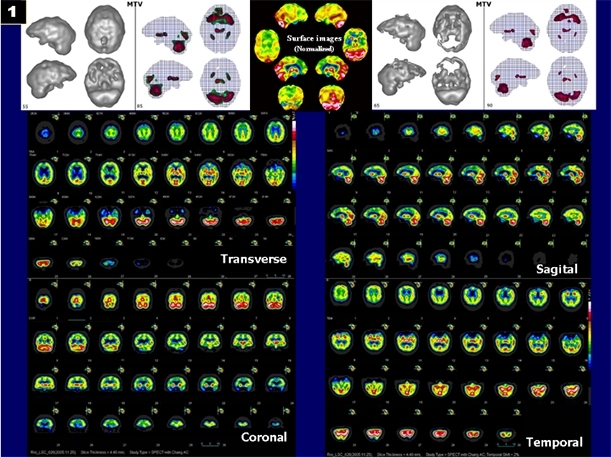Dementia is often of mixed etiology, and emotional co-morbidity is often present. This can make the diagnosis more difficult and, often, can delay an optimized treatment and interfere with an accurate prognosis. While brain SPECT has been used for a long time for this purpose, the tendency has been, lately, to rely on voxel based statistical evaluation methods. The problem is that some perfusion features and patterns can be missed by such methods due to the difficulty of obtaining adequate (age and instrument matched) normative databases. This is due to the significant variance found in some areas of the brain in normal populations and to the variety of gamma cameras used. More recently, there have been presentations documenting the adequacy of a visual evaluation of Brain SPECT, by experienced readers, in dementia differential (Hogh, Teller, Hasselbalch & Waldemar 2004) (1) (2) We have attempted to further expand this concept by using a comprehensive Brain SPECT display in order to provide an even clearer, more detailed and easy to learn set of displays and to use them as part of a visual, semi- quantitative evaluation for the differential of Dementia, in particular in complex cases with superimposed comorbidity.









